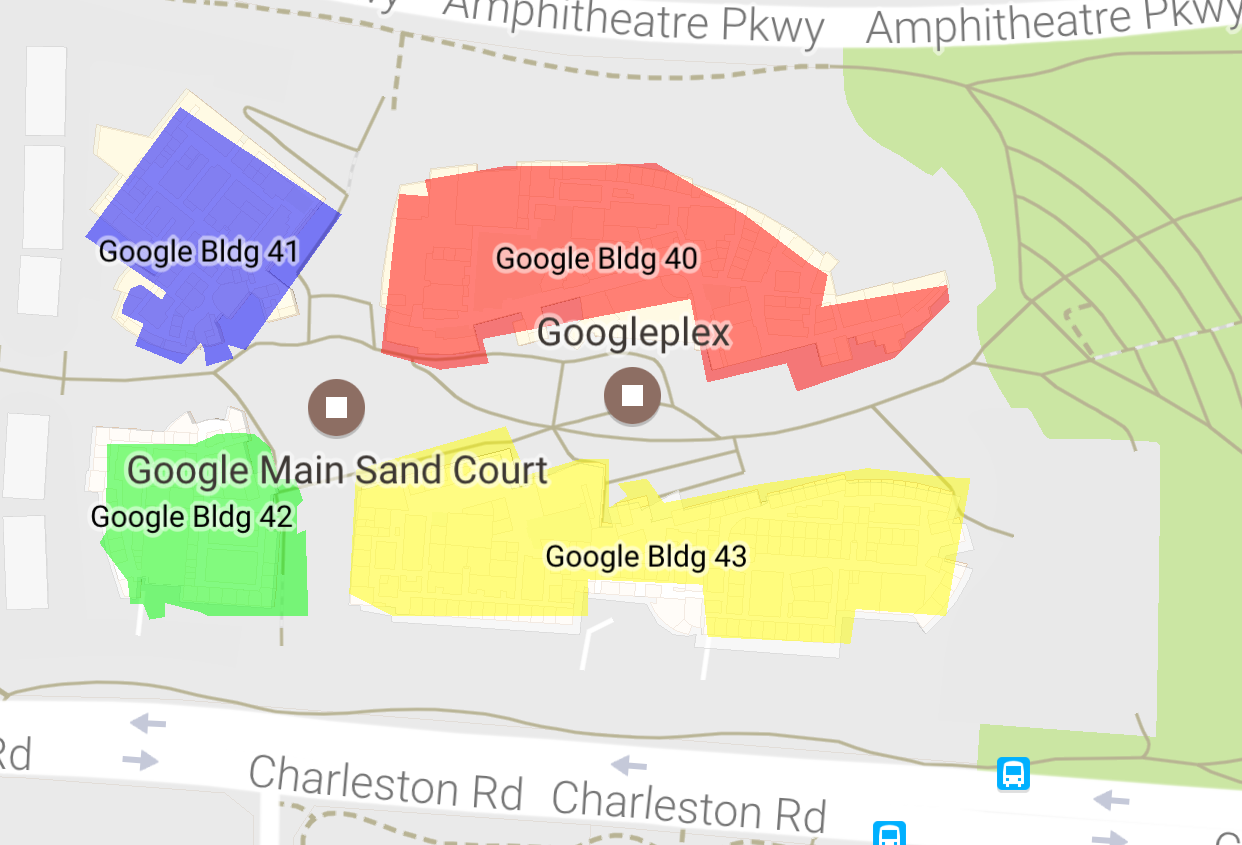Page Summary
-
This documentation explains how to render geographic data in KML format using the
GMUKMLParserandGMUGeometryRendererwithin the Google Maps SDK for iOS Utility Library. -
KML is a popular format used for displaying geographic data, including points, lines, and polygons, on maps.
-
To render KML data, create a
GMUKMLParserinstance with the path to your KML file, then use it to initialize aGMUGeometryRenderer, and finally, callrender()on the renderer to display the data on your map. -
Code examples in both Swift and Objective-C are provided to demonstrate the process of rendering KML data on a map using the Google Maps SDK for iOS.
This page shows you how to render geographic data in the KML
format, using GMUKMLParser in
conjunction with GMUGeometryRenderer. KML is a popular
format for rendering geographic data such as points, lines, and polygons.
The following screenshot shows some example KML data rendered on a map:

Prerequisites and notes
GMUKMLParser is part of
the Maps SDK for iOS Utility Library. If you haven't yet set up
the library, follow the setup guide before reading the rest of this page.
For the full code sample, see the sample apps on GitHub.
Rendering KML data
To render KML data on a map, create a GMUKMLParser with the
path to a KML resource (KML_Sample.kml in this example). Then,
create a GMUGeometryRenderer passing the GMUKMLParser
instance. Finally, call GMUGeometryRenderer.render(). The
following code example shows rendering KML data on a map:
Swift
import GoogleMapsUtils class KML: NSObject { private var mapView: GMSMapView! func renderKml() { guard let path = Bundle.main.path(forResource: "KML_Sample", ofType: "kml") else { print("Invalid path") return } let url = URL(fileURLWithPath: path) let kmlParser = GMUKMLParser(url: url) kmlParser.parse() let renderer = GMUGeometryRenderer( map: mapView, geometries: kmlParser.placemarks, styles: kmlParser.styles ) renderer.render() } }
Objective-C
@import GoogleMapsUtils; @implementation KML { GMSMapView *_mapView; } - (void)renderKml { NSString *path = [[NSBundle mainBundle] pathForResource:@"KML_Sample" ofType:@"kml"]; NSURL *url = [NSURL fileURLWithPath:path]; GMUKMLParser *parser = [[GMUKMLParser alloc] initWithURL:url]; [parser parse]; GMUGeometryRenderer *renderer = [[GMUGeometryRenderer alloc] initWithMap:_mapView geometries:parser.placemarks styles:parser.styles]; [renderer render]; } @end
